
Evergreen Trees (Conifers), Vegetation Around Las Vegas
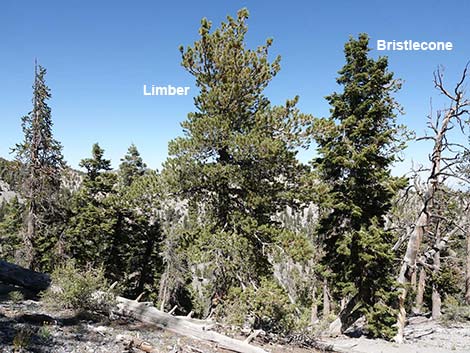 Limber Pines on a ridge at 10,000 feet |
General: Limber Pines (Pinus flexilis) are coniferous (cone-bearing) trees with medium-length, roundish, light green needles that form tufts at the end of the branches. Needles set in bundles of 5, and the bundles radiate in all directions from the twigs. The bark is light colored (white to gray). The cones are cylindrical, to 8-inches long, and the cone scales have thick tips. In Nevada, Limber Pine is an uncommon component of the montane vegetation in the Spring and Sheep mountains in the Transition (Yellow Pine Forests), Canadian (Pine-Fir Forest), and Hudsonian (Bristlecone Forest) life zones. This species is more common north of the Las Vegas region. Family: Pine (Pinaceae). Other Names: |
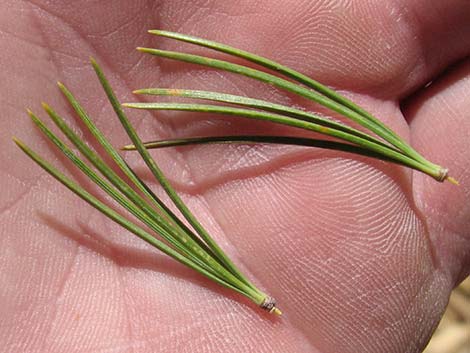 |
Plant Form: Tall straight tree with pointed crown in sheltered areas; short, twisted, and gnarled in more exposed locations. Height: To 50 feet tall. Trunk: To 3 feet diameter. Bark: Young tree: smooth, whitish gray; mature tree: dark brown to black, split by deep furrows and forming rectangular scales. Branches: Fairly thick out to the tips, but limber. The branches are mainly angled upward. Needles: Bundles of 5; dark green; 1 to 3-1/2 inches long with silvery white lines on all surfaces; in tufts at end of the branches. |
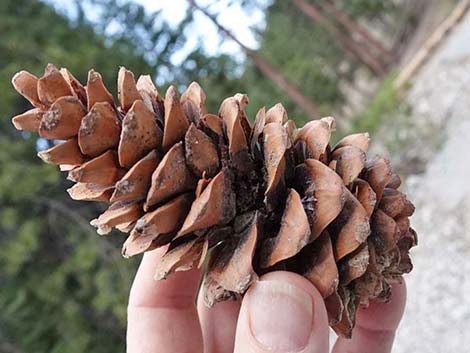 |
Cones: Light brown; oblong; without prickles; rounded scales with thick tips, 3- to 8-inches long. Seeds: Habitat: Mountain forests, rocky ridges. Elevation: 7,000 to 12,000 feet. Distribution: California to western Canada, South Dakota, and New Mexico. Comments: This species can most easily be seen along the Harris Saddle Trail near Harris Saddle and along the first mile or so of the North Loop Trail. |
 Limber Pine and Bristlecone Pine |
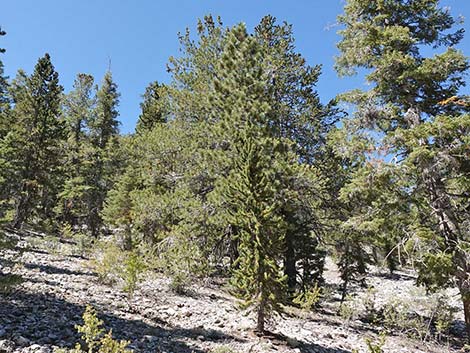 Limber Pine (center) and other conifers |
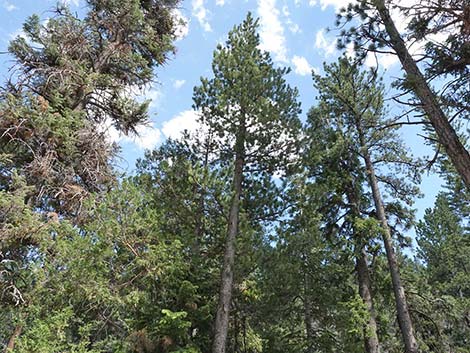 |
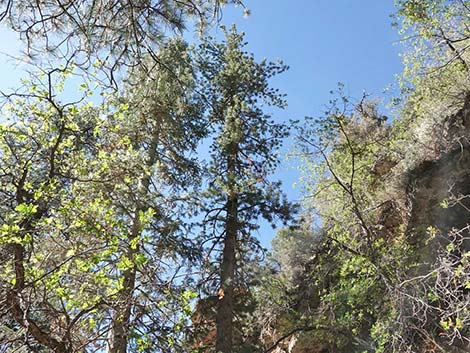 |
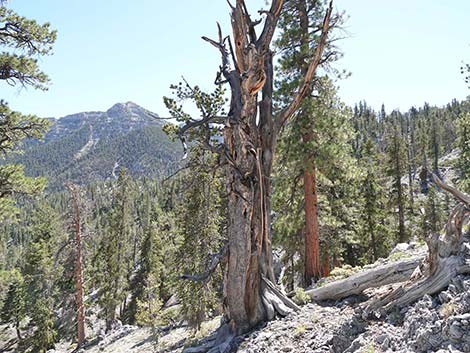 Some of the "Old Bristlecones" on Mt. Charleston are Limber Pines |
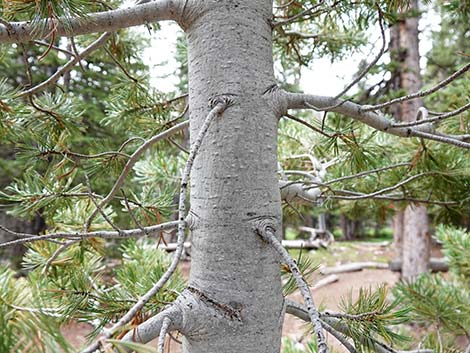 Limber Pine young bark is white |
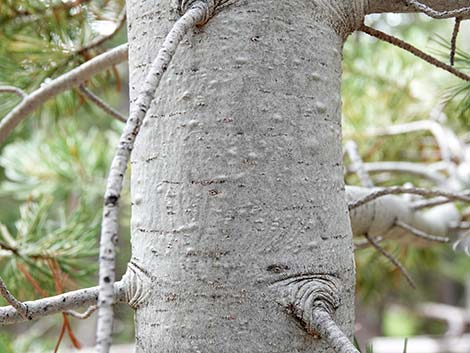 Limber Pine young bark is white |
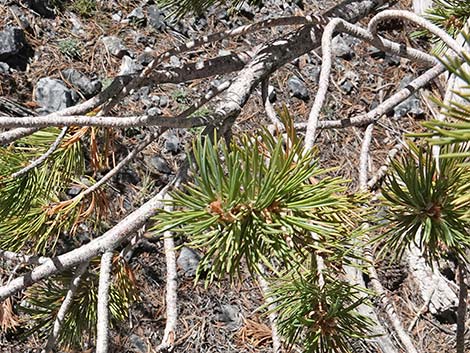 Limber Pine young bark is white |
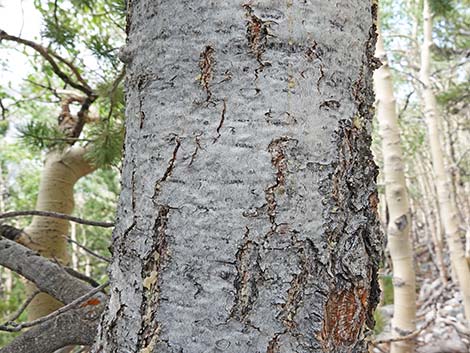 Older bark becomes split by furrows |
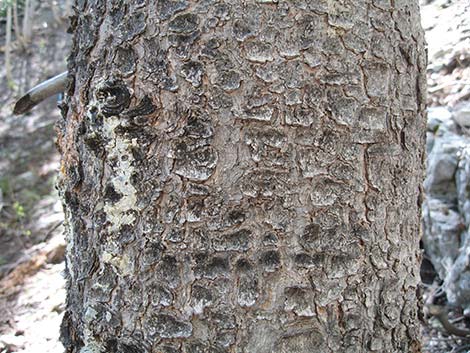 Older bark becomes gray, split by furrows forming rectangular plates |
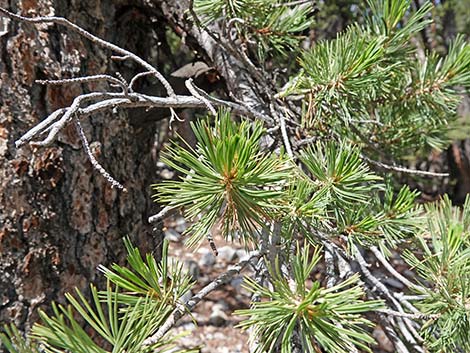 Limber Pine branches |
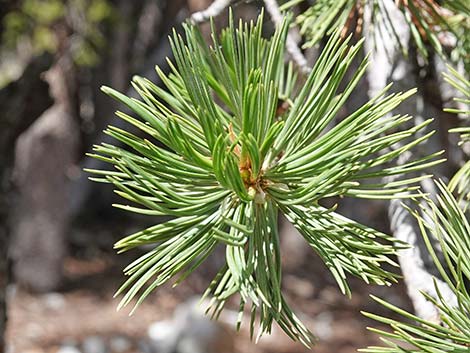 Limber Pine needles radiate round the branches |
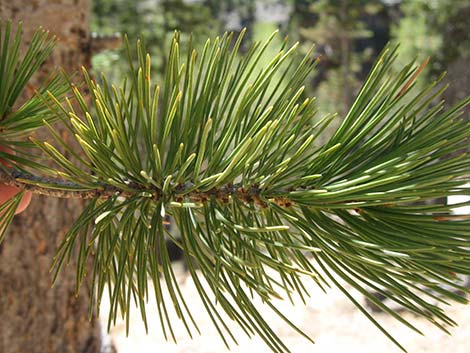 Limber Pine needles radiate round the branches |
 Limber Pine needles occur in bundles of five |
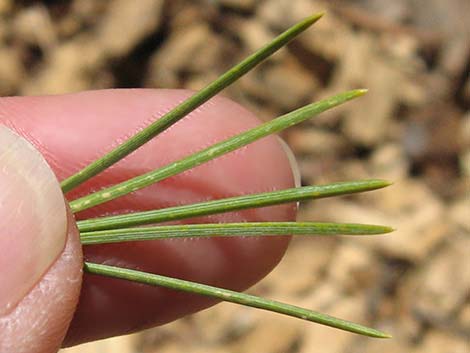 Limber Pine needles occur in bundles of five |
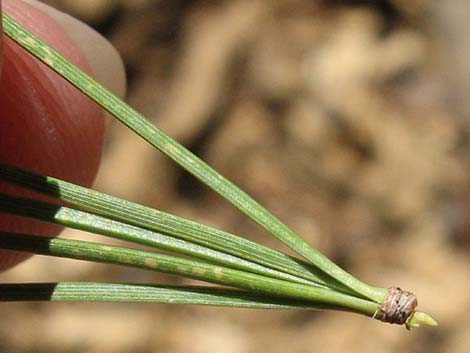 Limber Pine needles occur in bundles of five held by papery fascicle |
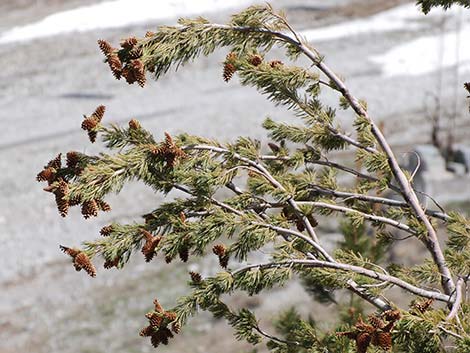 Cones on the ends of flexible branches |
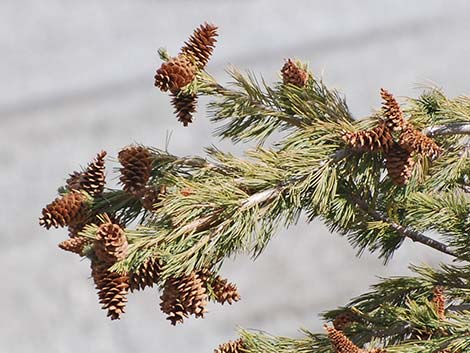 Cones on the tree |
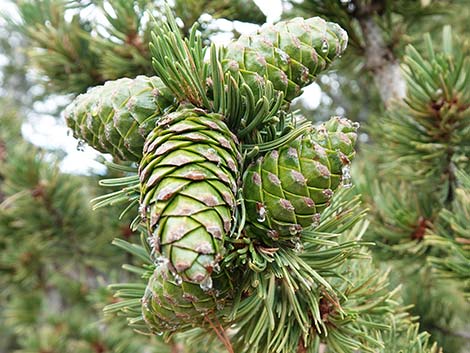 Limber Pine cones are held at branch tips |
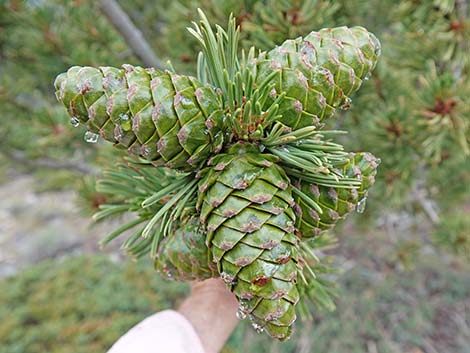 Limber Pine cones are held at branch tips |
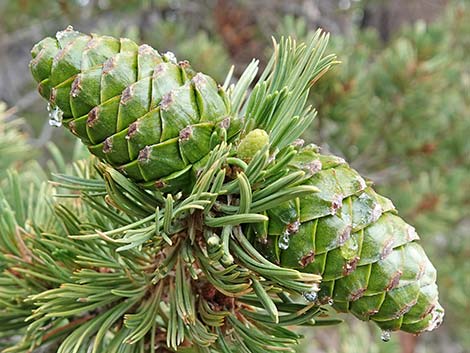 Limber Pine cones start with broad, green scales |
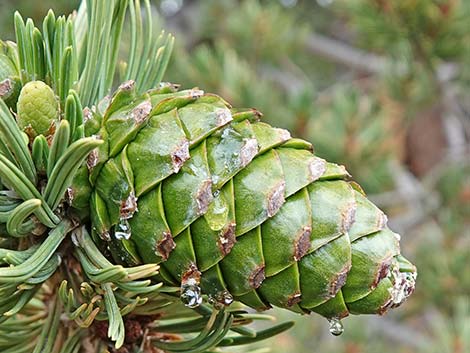 Limber Pine seeds defended by large scales and lots of sticky sap |
 Limber Pine dries cone showing broad scales |
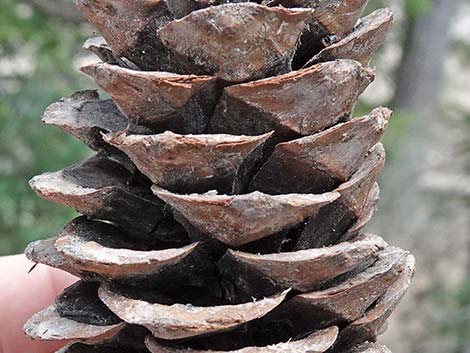 Limber Pine dries cone showing broad scales |
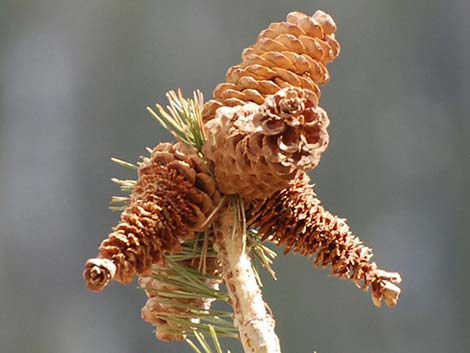 Cones on the tree chewed by rodents |
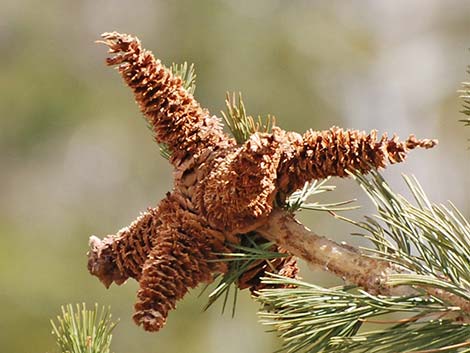 Cones on the tree chewed by rodents |
Note: All distances, elevations, and other facts are approximate.
![]() ; Last updated 230811
; Last updated 230811
| All Conifers | Plant Species Index | Glossary | Copyright, Conditions, Disclaimer | Home |